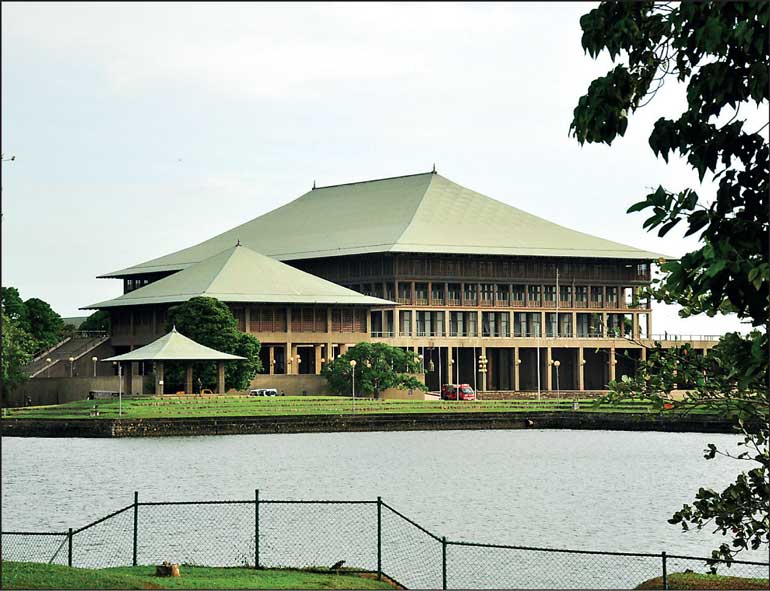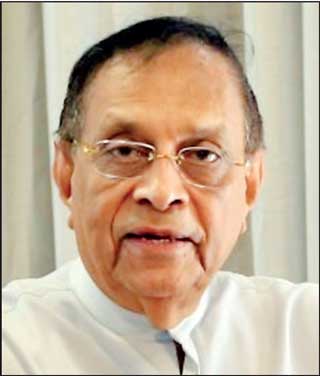Sunday Dec 28, 2025
Sunday Dec 28, 2025
Wednesday, 12 January 2022 00:00 - - {{hitsCtrl.values.hits}}

 |
| Parliament of Sri Lanka
|
The National Movement for Social Justice (NMSJ) has been faulted for not turning its attention to the process of constitution-making. This is far from the truth. While the NMSJ’s current proposals are on the contents of a new Constitution, it has also initiated a discussion on the process.
Last month, the NMSJ organised a discussion in cyberspace on constitution-making that the writer moderated. Among the issues discussed were: merits and demerits of the present constitutional provisions on constitutional reform; the current government’s approach to making a new constitution; how best to adopt a constitution that has wide acceptance as well as legitimacy; the option of a Constitutional Convention; safeguards against majoritarian constitution-making; public participation; and the role of experts, elites and civil society.
There is presently a discourse on making a new constitution without the involvement of Parliamentarians. One argument for such a process is that when a constitution is made by Parliamentarians, they will give primacy to their own interests.
The ongoing Chilean constitution-making process has been held up as an example. Following massive public protests in October 2019, political parties agreed to a new reform process. The Chilean Constitution was accordingly amended, new Articles 130 to 143 providing for the new but one-off process. Voters were asked at a referendum whether they wished to have a new Constitution. They were also asked whether the new Constitution should be made by a Constitutional Convention composed in equal parts by popularly elected members and parliamentarians in office or made up exclusively of popularly elected members.
Voters overwhelmingly opted for a new Constitution to be adopted by a Convention composed exclusively of popularly elected members. A Constitutional Convention was then elected. Men and women are almost equally represented, and the average age of members is 44.5 years. The youngest member is just 21 years old. Nearly 43% are lawyers and law students; 13% are teachers. Indigenous people have guaranteed representation. The new Constitution requires to be passed by a two-thirds majority and approved by the people at a plebiscite where voting is mandatory.
The writer agrees that a constitution adopted by a Constitutional Convention elected specifically for the purpose is
the best option. But for such a process, too, a constitutional amendment would be necessary, as in the case of Chile. Getting Parliamentarians to agree to such an amendment will not be easy but not impossible. After all, the Seventeenth and Nineteenth Amendments were passed with cross-party support and near-unanimity.
A question raised is whether a Constitutional Convention could be set up through a referendum or based on an electoral mandate without following the amendment process set out in an existing Constitution. The Sri Lankan Constituent Assembly process of 1970-72 that was ‘extra-constitutional’ vis-à-vis the Soulbury Constitution but set up following a Parliamentary election has been cited as a parallel.
It is in very extraordinary circumstances that such a process would have legitimacy. After a long period of dictatorship, it would be meaningless to go back to the ‘old’ constitution, and there would be overwhelming support for a novel process to adopt a new constitution. The same would apply to a new State that emerges after a successful war of liberation. After Bangladesh was created, a Constituent Assembly consisting of the members of Pakistan’s federal and provincial assemblies in former East Pakistan was set up.
In Sri Lanka, then Ceylon, there was growing support by the mid-sixties for a new ‘home-grown’ or ‘autochthonous’ constitution, with a complete legal break from the existing Constitution. By this time, there was a definite trend in the Commonwealth towards enacting constitutions rooted in native soil to replace those imported from the United Kingdom. In the Indian Independence Act, there was provision for continuing the Constituent Assembly process begun for undivided India even before independence. The Constituent Assembly, which also served as the first legislature, adopted the present Indian Constitution without a division.
The Ceylon Independence Order-in-Council, on the other hand, did not provide for a Constituent Assembly. The question had been raised whether Parliament could replace the British Sovereign, a source of the legal authority of the Constitution and a constituent part of Parliament. The statement by Lord Pearce in the Privy Council in Bribery Commissioner v Ranasinghe that section 29(2) was ‘unalterable under the Constitution’, although obiter, gave added support to the move towards a complete legal break with the past.
At the General Elections of 1970, the United Front sought a mandate from the electorate to permit Members of Parliament to function simultaneously as a Constituent Assembly to draft, adopt and operate a new constitution. At the election, a high percentage of voters, 84.9, exercised their franchise. The United Front had 116 out of the 151 members elected but obtained 48.8% of the votes cast. It is significant that all political parties represented in Parliament participated in the formation of the Constituent Assembly, thus giving legitimacy to the process. However, the Constitution that the Constituent Assembly adopted lacked legitimacy.
The Federal Party discontinued participation after the Assembly decided to make Sinhala the only official language. The United National Party voted against the Constitution. With all political parties agreeing on the Constituent Assembly process, it was a unique opportunity to adopt a constitution that had the support of the people at large. But Assembly proceedings show that the United Front, which had a two-thirds majority but had received a little less than 50% of the popular vote, imposed a constitution of its choice. The Constitution also extended the term of the legislature by two years which had a chilling effect on Sri Lankan democracy. There is certainly a lot to learn from the 1970-72 reform process.
The extension of the legislature also served as a precedent for President Jayewardene to follow and extend the 1977 Parliament by six years with the ‘approval’ of the people at the infamous referendum of 1982. The manner in which the referendum was manipulated also serves as a lesson on how a referendum could be used for majoritarian constitution-making.
There is great danger in adopting a process that bypasses the one that is mandated by an existing Constitution. Just imagine the kind of constitution that would have emerged if President Gotabaya Rajapaksa called a referendum soon after his election and set up a Constituent Assembly!
The writer reiterates his support for a Constitutional Convention set up after the due amendment of the provisions of the present Constitution relating to constitutional reform. At the NMSJ discussion on the mechanics of constitutional reform, a senior lawyer with international experience who is a prime mover of the collective urging the setting up of a Constitutional Convention clarified that the present Constitution needs to be amended to provide for such a Convention.
The writer proposes engagement with political parties and citizens’ organisations on the desirability of setting up a Constitutional Convention. However, any discussion on reform must not be limited to the process of reform; it is essential that we do not get bogged down on process but also focus on content.